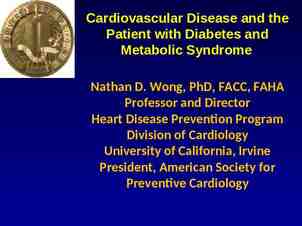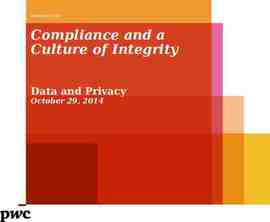Ayrshire and Arran’s Physical Health & Mental Wellbeing Action
11 Slides398.88 KB

Ayrshire and Arran’s Physical Health & Mental Wellbeing Action Plan Andrew Pulford (Senior Public Health Research Officer) Liz Ferries (Team Leader, South CMHT)

National drivers Scottish Government Mental Health Strategy 2012-15 Scottish Recovery Indicator Releasing Time to Care inpatient programme National standard for monitoring the physical health of people being treated with Clozapine (Scottish Govt/RCPsych) The Road to Recovery (2008) Changing Scotland’s relationship with Alcohol (2009) NHS Health Scotland outcomes framework for mental health improvement (2010) – Promoting health & healthy behaviours – Sustaining inner resources – Increasing social connectedness, relationships & trust in families & communities – Increasing social inclusion & decreasing inequality & discrimination – Increasing financial security & creating mentally healthy environments for learning & working – Creating a safe & supportive environment at home & in the community

Local context Healthy Mind Health Body project (2008) Physical Health & Mental Wellbeing Group (2008) – Reps from all MH Services, Addictions, LD Services – Also various Public Health reps over the years – Work plan developed 2009 – refreshed 2014-17 Ayrshire and Arran’s Mental Health & Wellbeing Strategy 20152027 – Population rather than service focus – PHMW Action plan aligned to strategy and developed using national outcomes framework and complementary evidence base

Matrix model of mental health and wellbeing

Developing the action plan PHMW Group used 2/6 outcome areas to direct work: – Promoting health & healthy behaviours Screening & health checks Activities to promote health & healthy behaviours – Sustaining inner resources Building inner resources Signposting to activities & services relating to wider determinants of health Provision of mentally healthy services

Governance arrangements Clinical Governance and Development Group (NHS A&A’s overarching CG group for MHS) 3 Mental Health Partnership Groups (including statutory and third sector providers) Monitoring and evaluation – Monitoring of actions by PHMW group members – FACE – Physical health reporting tool

Influencing service improvement Acknowledge and share good work already underway Avoid being prescriptive – allow services/teams to develop actions in response to service users’ needs/preferences Tests of change – start small and spread out Spread ownership of actions – Professional groups named as action leads rather than individuals – Action to include health improvement dimension in all KSF outlines for Mental Health staff

Physical health promotion Pilot a Physical Health Clinic for patients attending the South Ayrshire CMHT who are prescribed Clozapine or other antipsychotic medication. Pilot to run for 3 months with service users under care on one consultant – plan to expand to other service users after initial pilot Additional staff training included in PDRs with service development being promoted and option to write up as additional evidence for KSF or revalidation We will systematically record, analyse, act on (at an individual level), report (at a population level) and learn from (at an organisational level) the data that is collected

Carers’ support Staff training, promoting carer awareness Being aware of local resources and what they provide – avoid duplication. Directed by carers’ needs and preferences. Developing carers’ pack Updating info leaflets to include support for carers Encourage carer involvement

Recovery/staying well 4 session model to promote independence and self-management 1. 2. 3. 4. Strengths-based symptom management Staying well plans Peer support, IPS, OT involvement Contact plans for future open door policy, carer involvement and collaboration

Conclusion More efficiently using resources we’ve got to develop a service that is more user friendly and easier to access Thanks for listening – any questions?






